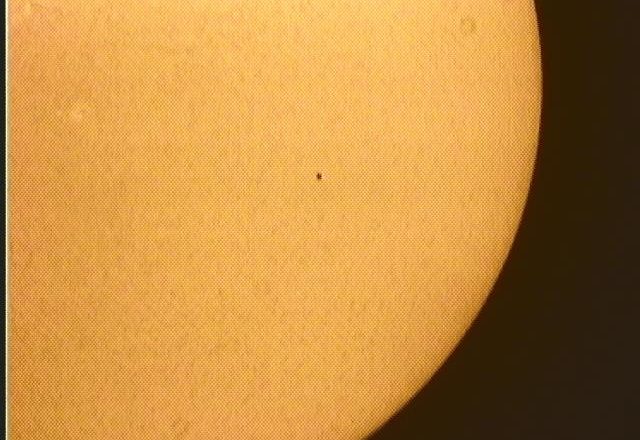Viewing the Sky on Cloudy Nights and Clear Days
- Share
- Tweet
- Pin
- Share

by David Udell, DPAS president
One of the biggest frustrations of amateur astronomers everywhere is dealing with cloudy skies. This past winter here in Door County we seemed to have nothing but cloudy skies for the better part of three months. The Door Peninsula Astronomical Society (DPAS) scheduled viewing nights at the Leif Everson Observatory in January and February were canceled and March was no better. We grumbled through the winter hoping for those crisp and clear nights and did manage a few brief treks to the Observatory when the skies cleared. The main goal of these sessions was to get our main telescope and camera set up and ready for clear nights.
As usual we found that winter and cold temperatures play havoc on the dome and shutter of the Observatory and so at times we were forced to limit our viewing and deal with nuisance issues. We managed through it all and while we have some more maintenance to do once the weather warms up, we hope to be up and running full speed soon.
Working with our scope and setting up the video camera, one of our members came across the site set up by Rock Mallin, the designer and builder of the video camera we use. His site, nightskiesnetwork.ca, is set up so amateur astronomers like us can broadcast their images over the web. This site is free and anyone can log on either with a username and password or as a guest. Logging in takes only a minute and once logged in, you are taken to a page that will have thumbnail screens showing if a broadcast is in progress as well as a listing the hundreds of individuals or observatories with their screen name and flag of their country.
There are more than 150 sites of amateur astronomers set up to broadcast their images and are from all over the world. If one of those sites is broadcasting, their name is highlighted and by clicking on it you are taken to their broadcast. That screen is divided into the image that they are broadcasting as well as a chat room with that person or club and a third screen with list of visitors. So this allows anyone dealing with cloudy skies to perhaps have a view of night sky.
Another tab at the top screen “community” has a drop down menu called Broadcast Captures that shows images of various objects sent in from the different sites. Here you can view various galaxies, nebulae, star clusters or the moon from the other observatories or back yard telescopes. Much like Door Peninsula Astronomical Society, these folks are proud to share the images of the night sky.
On May 9, DPAS broadcast on Night Skies Network the “Transit” of Mercury. We were one of the few locations that had clear skies that morning. We received many thanks in the chat room from visitors unable to view from their location. The “little dot” on the accompanying DPAS photo is from our broadcast as Mercury transited.
A transit occurs when a planet passes in front of the star that it orbits. From here on Earth we can only see when Mercury and Venus transit as they are the inner planets of our solar system. The orbital period, how many days it takes a planet to orbit, is 88 days for Mercury and 225 days for Venus. With Earth’s 365-day period, our orbit must coincide with the timing and orientation to be able to view those transits. The Transits of Venus in 1761 and 1769 were very important in astronomy as it helped determine the distance of Earth to the Sun and the size of our solar system. Venus transited recently in 2004 and 2012 and will not be visible again from earth until 2117 and then in 2125! Mercury transits, while less impressive as it is significantly smaller, occur a bit more frequently. The next one is 2019 then 2032 and 2039. As with any viewing of the Sun, protection must be taken when viewing transits.
In 2009 NASA launched the Kepler Space Telescope, designed and built to look for transits of planets in other solar systems. This mission has looked continually at a small area of the sky that has 100,000 stars, looking for when a planet crosses in front of it. To date, Kepler has confirmed the existence of 2,326 “Exoplanets,” planets orbiting other stars. Many of these solar systems are very unique but all are teaching us that planets are very common in our Milky Way Galaxy. The NASA website, kepler.nasa.gov, is a great source of information regarding the discoveries and mission.
The June meeting of DPAS is Tuesday, June 7 at 7 pm at the Astronomy Center off Utah St. The topic is “The Moon Revisited” presented by Dr. Beck and “Viewing Target of the Month will be presented by Gary Henkelmann. The public is invited.

